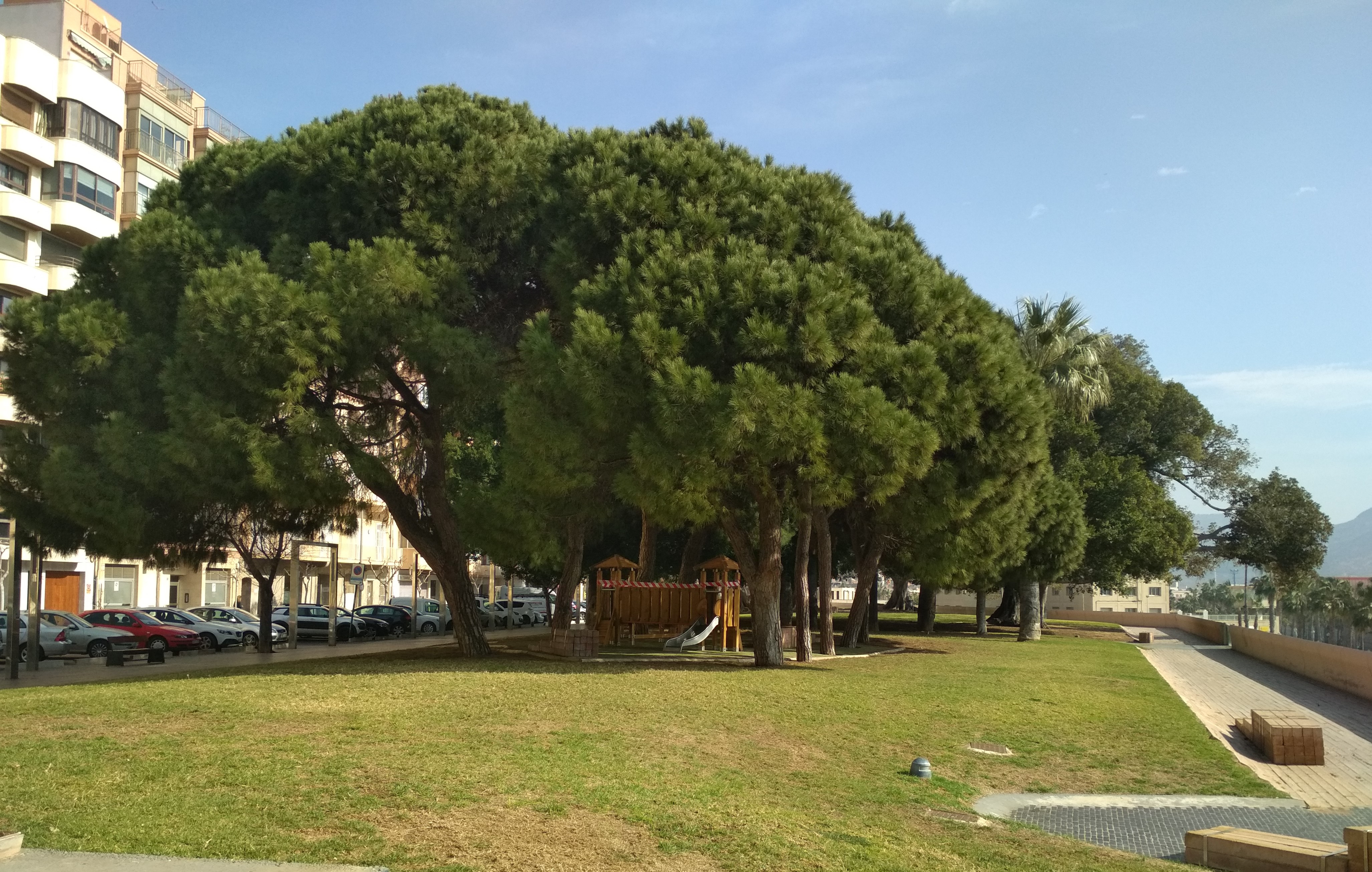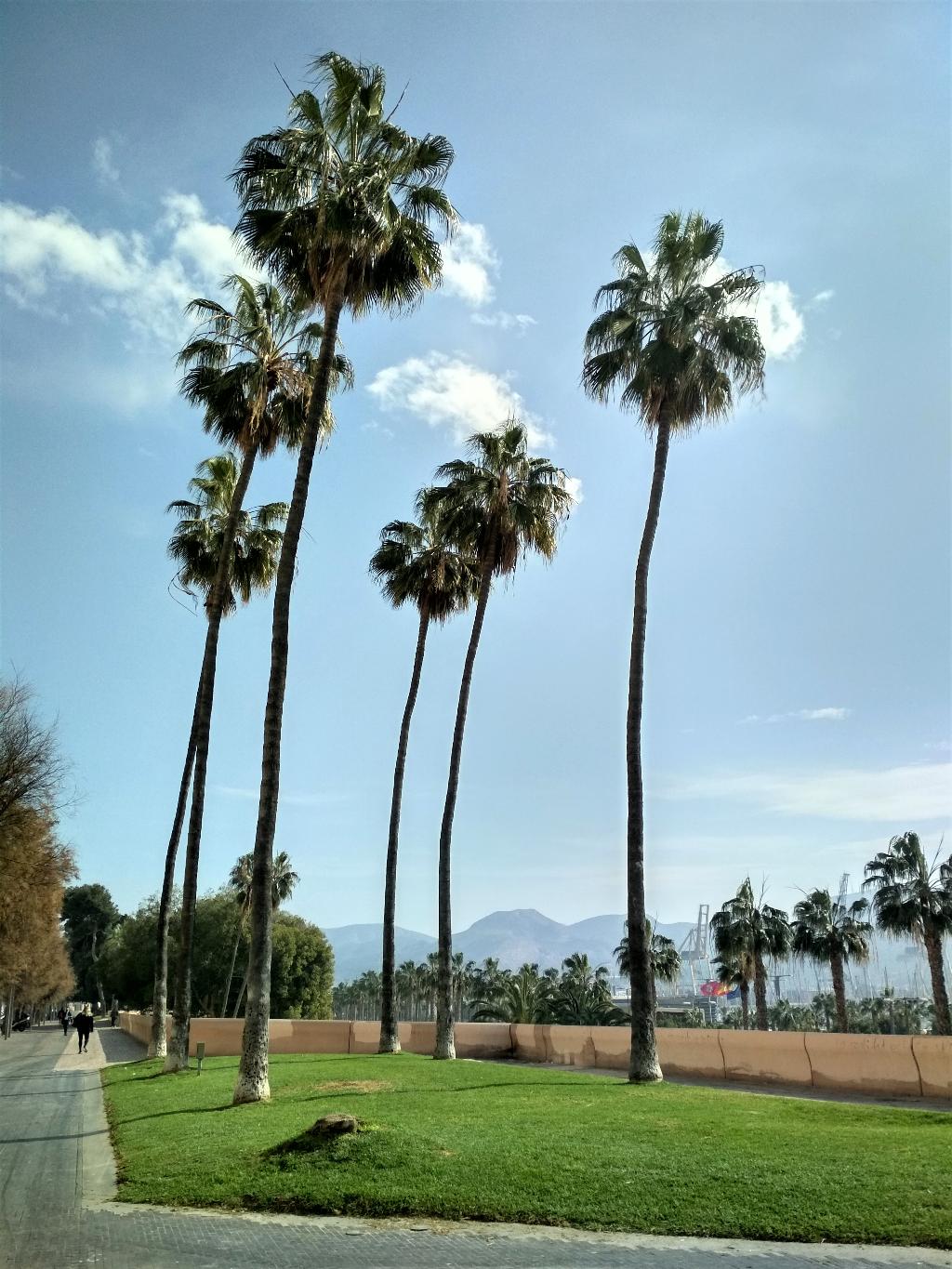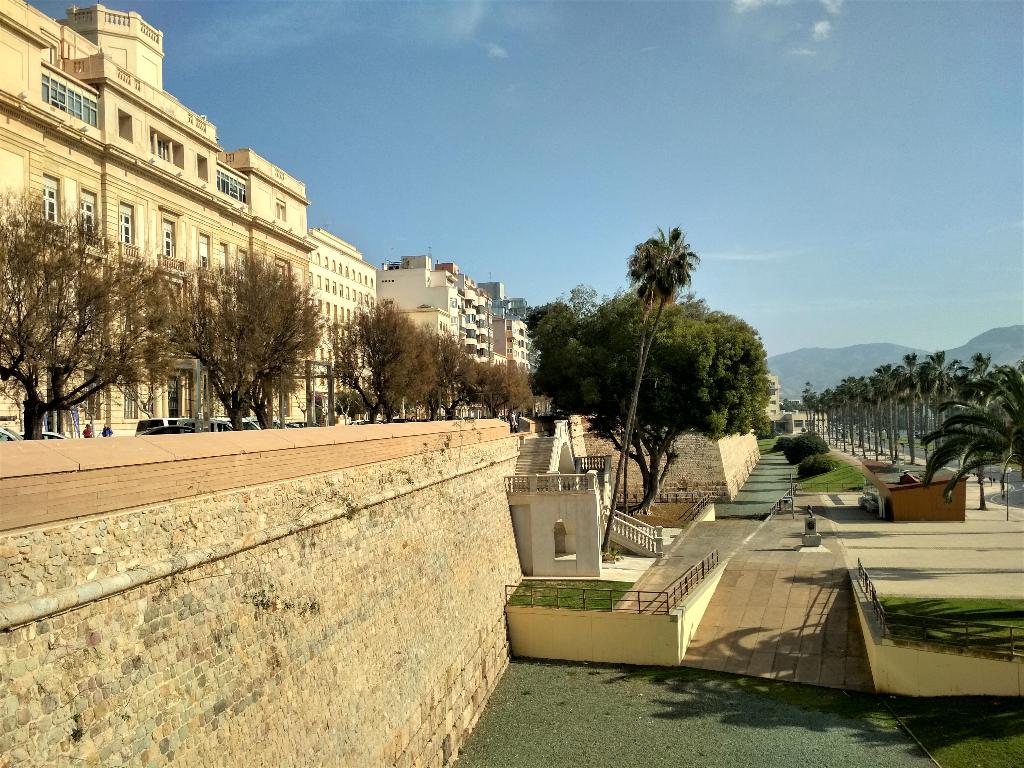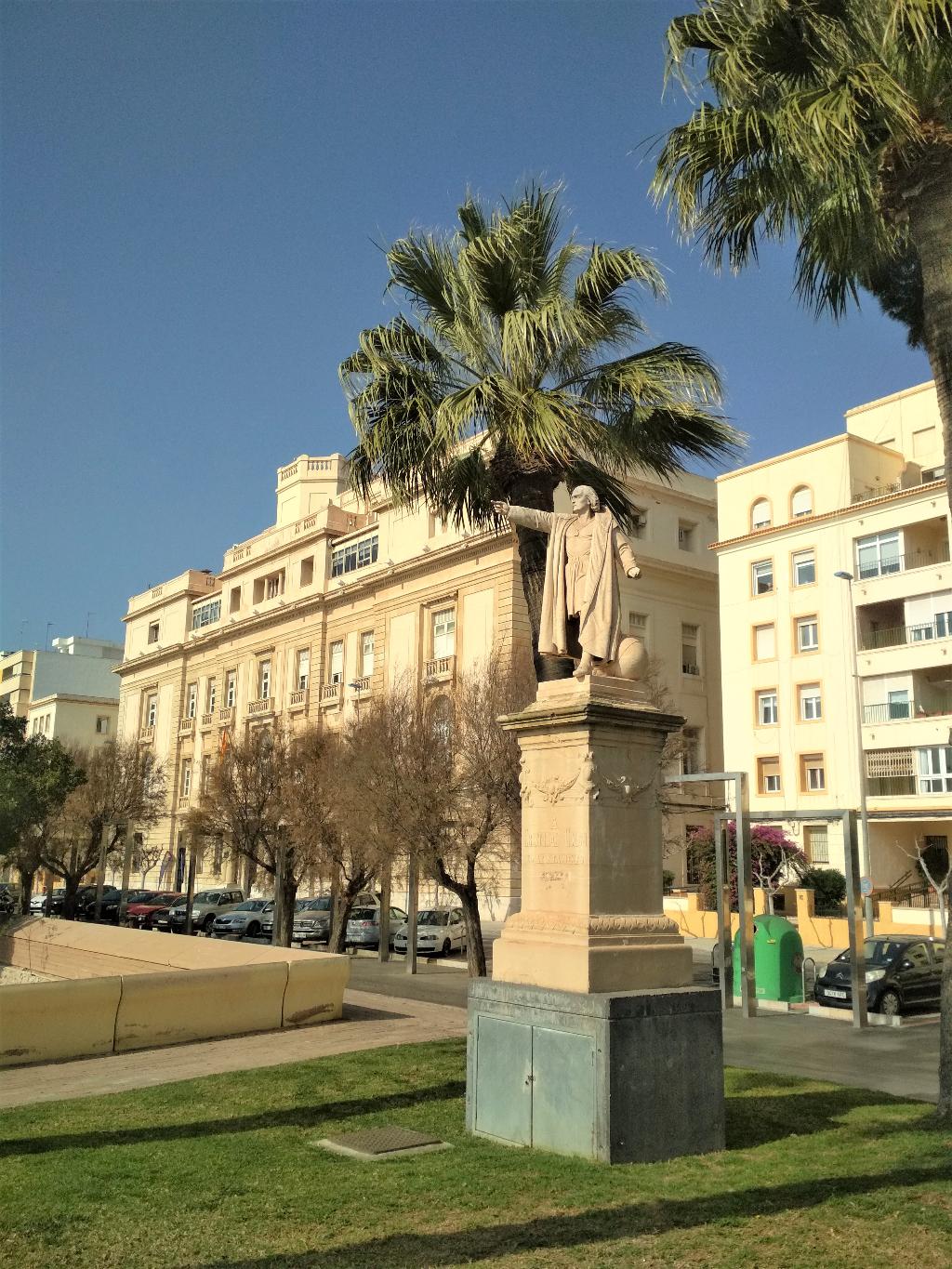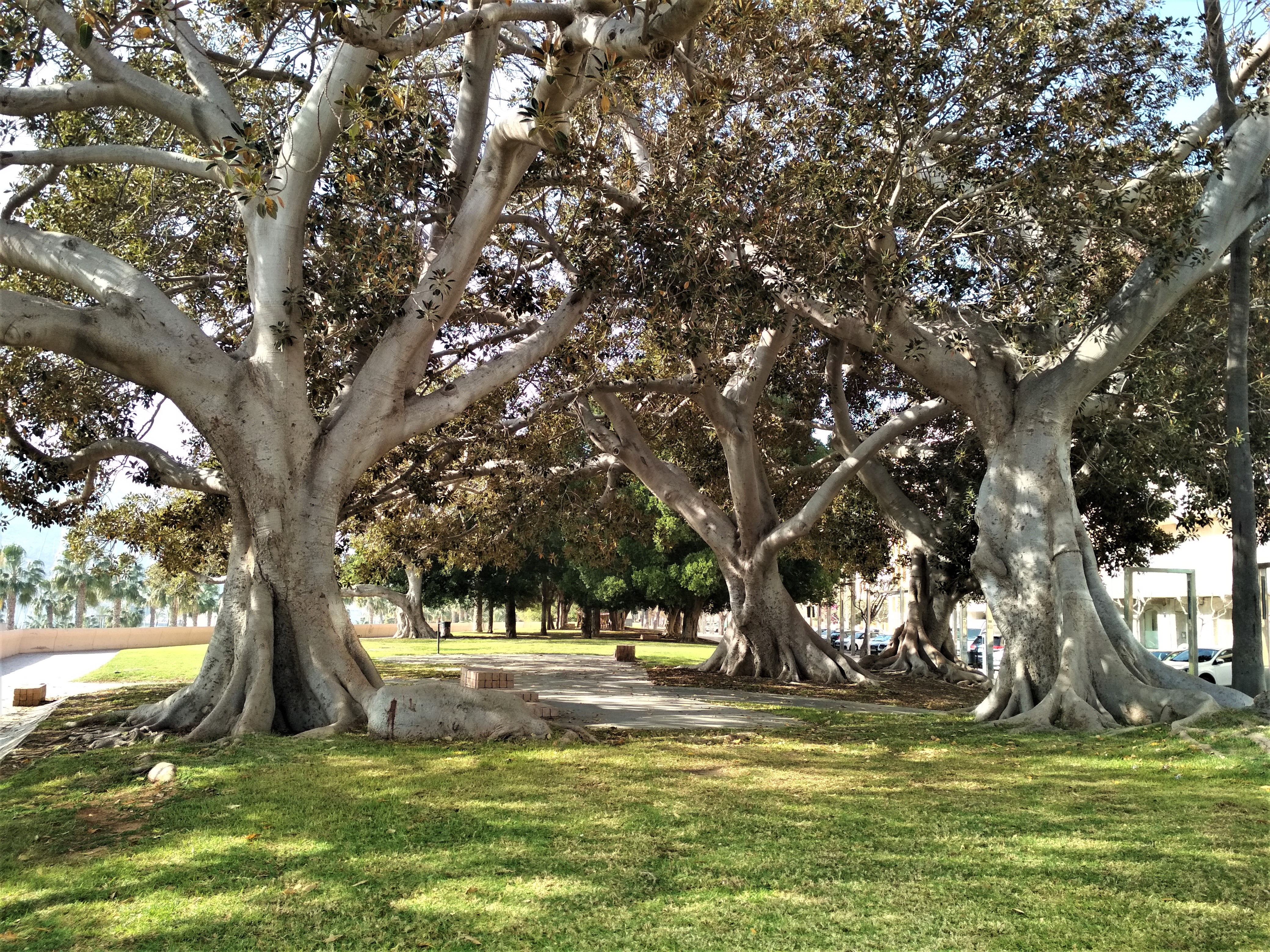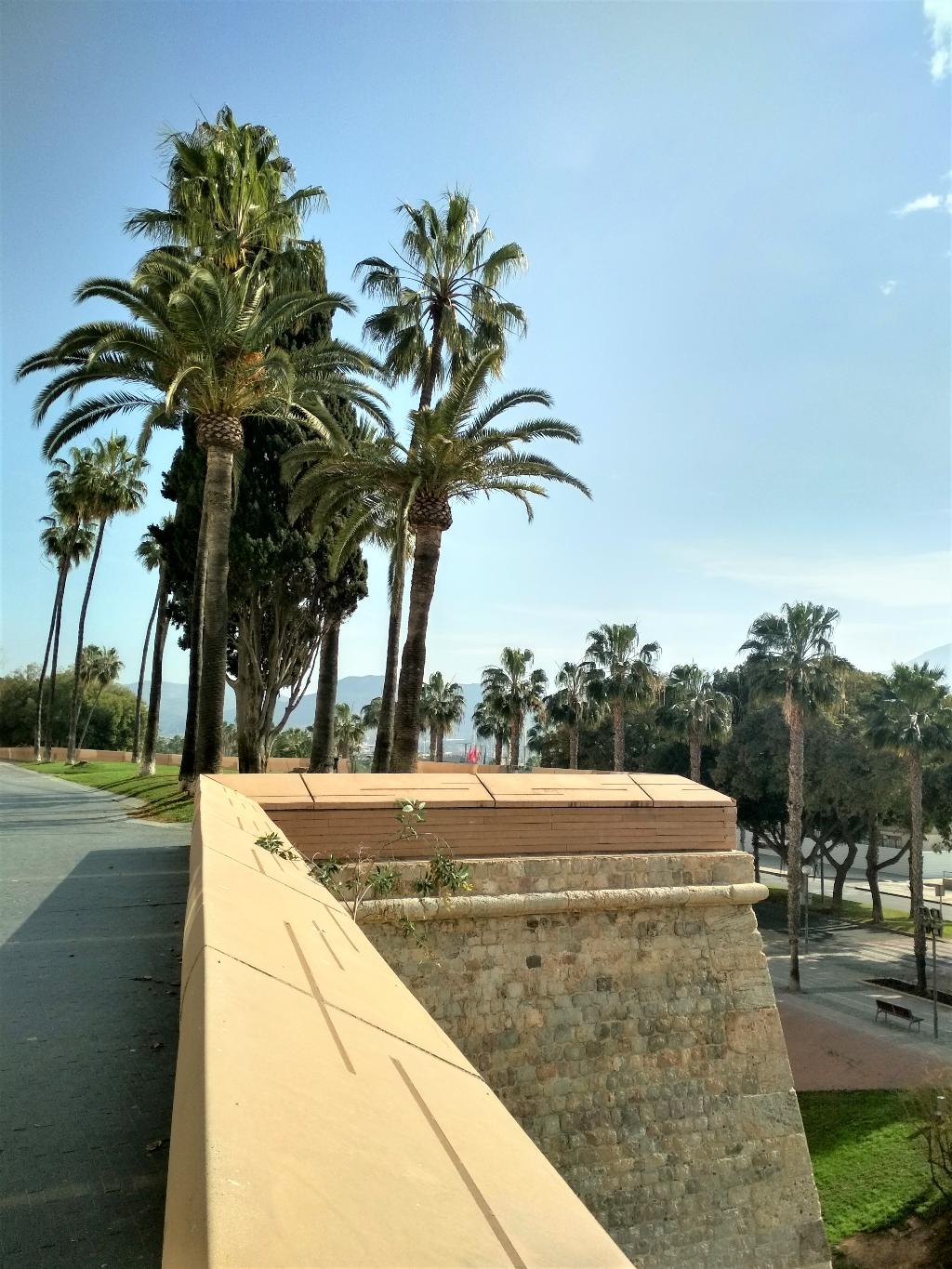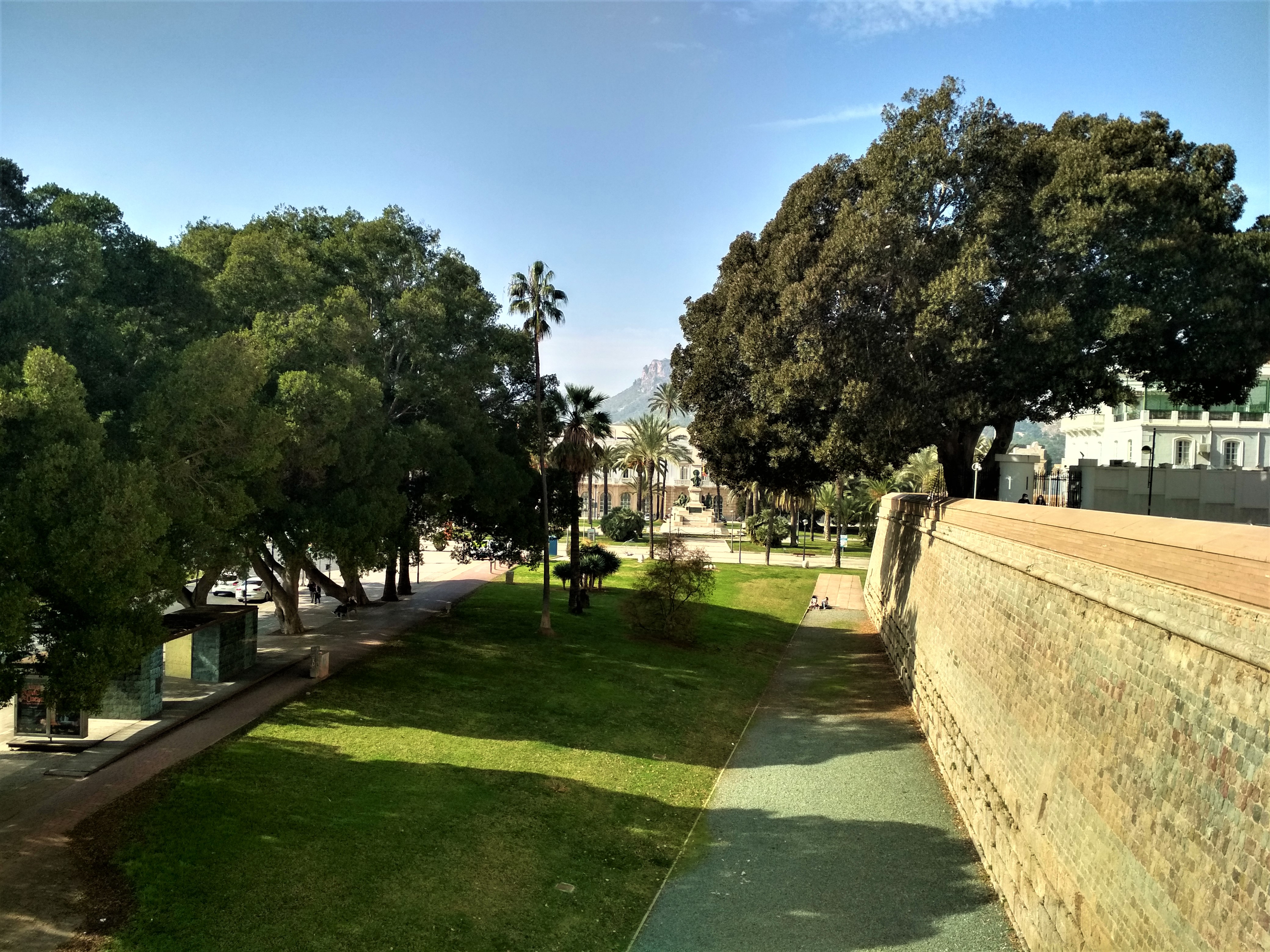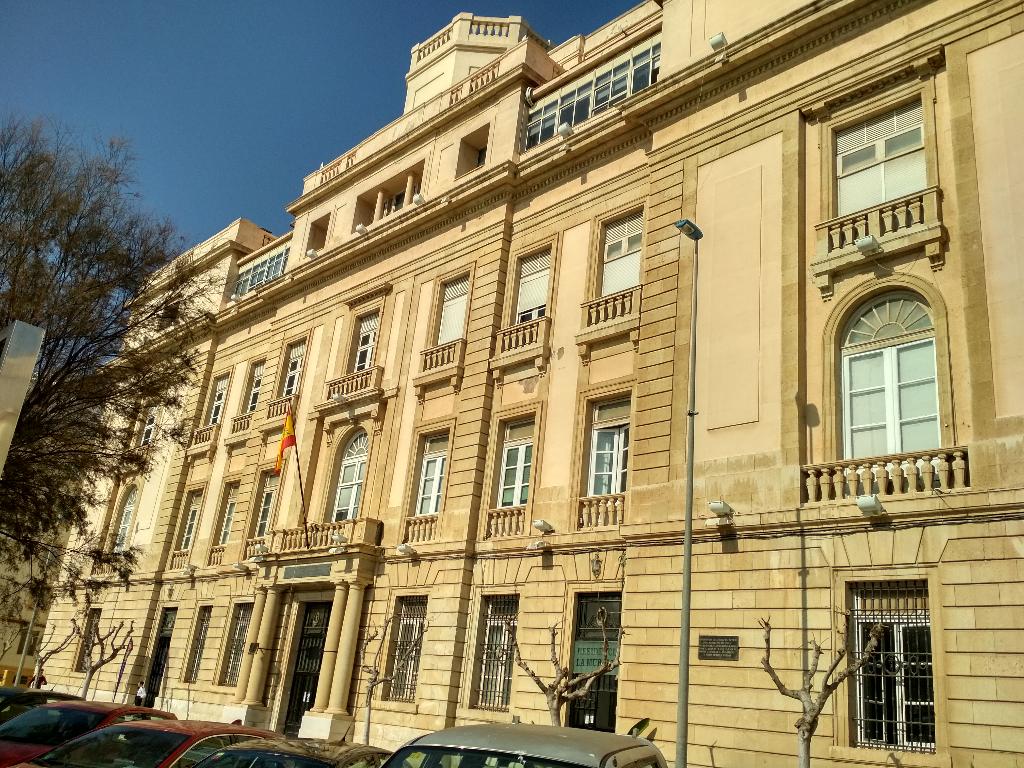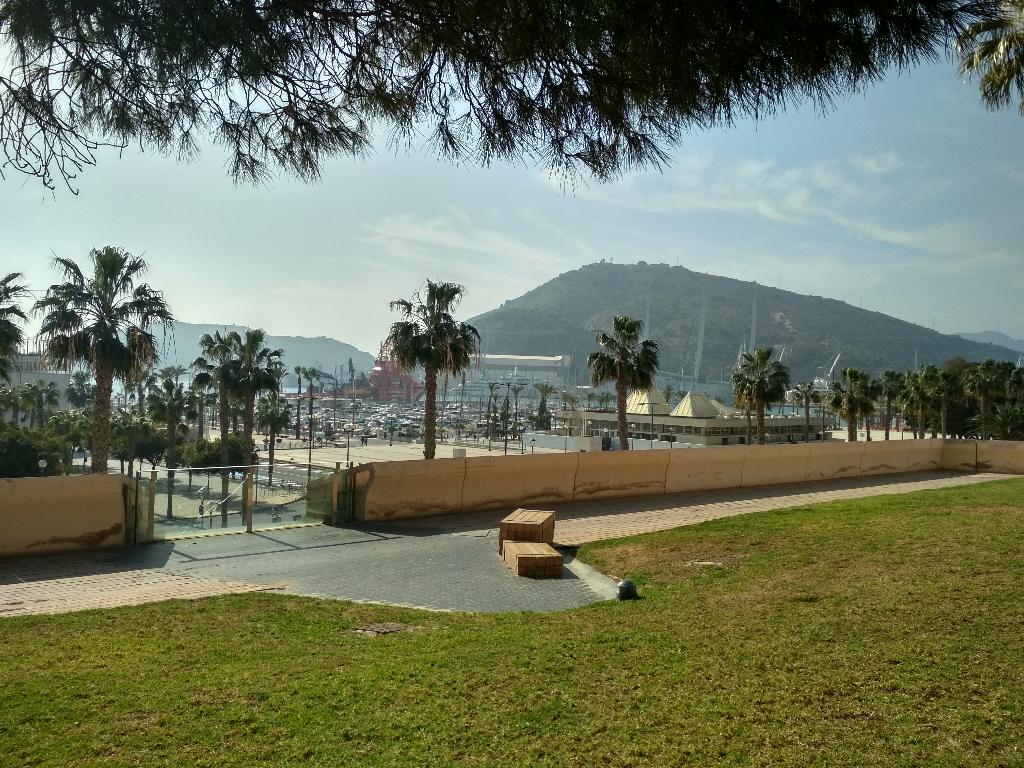The promenade runs along the seafront of the 18th century bastioned wall, the only remaining section of the great defensive work ordered to be built by Charles III. Its bastions, joined by straight stretches of wall, allowed for defence between them. The construction of these walls and the military buildings of the period gave rise to new roads, such as the Calle Real or the Muralla del Mar, which favoured accessibility between the different military establishments.
Among these buildings is the Midshipmen's School, designed in 1788 by Juan de Villanueva - who also designed the Prado Museum - as a training centre for naval officers. The building presides over the seafront with its façade of Doric columns and the top of a hexagonal tower for astronomy practice. It is currently the Navy's General Services Centre.
The mining boom at the end of the 19th century allowed a great urban reform to be undertaken, which included the creation of the new port of Cartagena, on land reclaimed from the sea, which until then had been along the front of the city walls. In 1888 this land was ceded to the municipality, thus giving birth to the great balcony of Cartagena overlooking the sea, which became the preferred place of residence for the most privileged classes. The projects for the promenade date from 1914 and are linked to the works on the new Paseo de Alfonso XII, which will turn the area into a promenade with English-style gardens and which will be completed with a monumental staircase in front of the old Midshipmen's School, which connects the Wall with the Paseo de Alfonso XII.
In the 1920s, under the mandate of Mayor Torres, as part of his projects for the remodelling and ornamentation of the city, the Monument to Columbus was placed in the gardens of the Muralla del Mar, the work of Juan San Martín Serra, made of Carrara marble and placed on a pedestal designed by Lorenzo Ros. The statue represents the sailor in his most widespread iconography: with his arm outstretched pointing to the horizon.
The last remodelling was carried out in the 1990s, preserving the impressive Australian fig trees (ficus macrophila), which share space with the Indian laurels (ficus microcarpa) that carpet the ground with their small fruits. The ficus located at the end of the wall overlooking the Plaza de los Héroes de Cavite, "El Gobernador" (The Governor), because it is within the enclosure of the Military Government of the Army, has a name of its own by right of antiquity. The height and stylised trunks of its Mexican fan palm (Washingtonia robusta) and Californian fan palm (Washingtonia filifera) are also striking. In the area more protected from the sun by a grove of pine trees is the children's play area.
The walk along the Muralla del Mar also allows you to enjoy the magnificent views of the port of Cartagena, which has recovered its value as a space for urban use and leisure, with important elements such as the National Museum of Underwater Archaeology ARQVA and the Auditorium and Congress Centre "El Batel".



